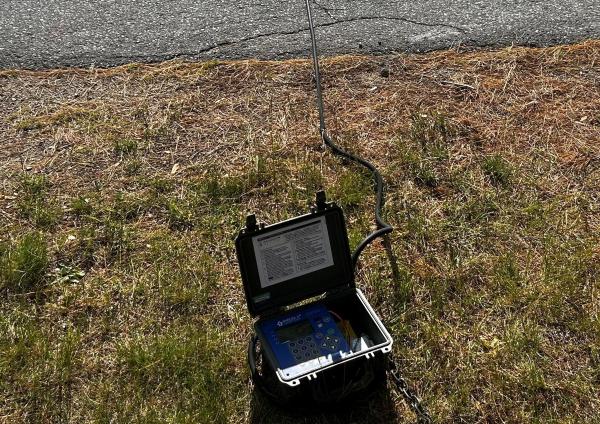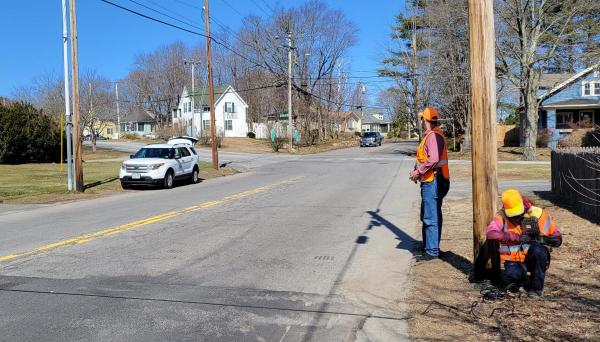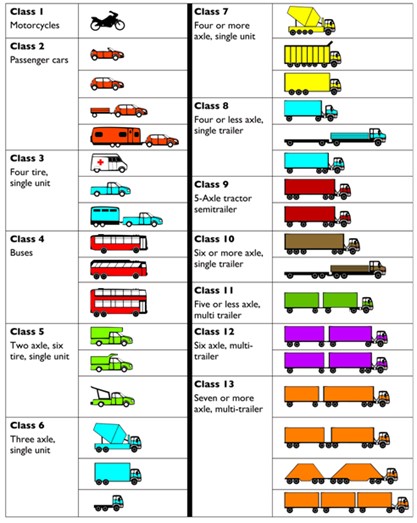Traffic Counting FAQ
As you are driving through the SNHPC region, you may have noticed black tubes laid across the roadway attached to a small plastic box on the side of the road. SNHPC utilizes this traffic counting equipment to gather and monitor vehicular traffic data. Read on to find out more about the SNHPC traffic counting program.

Who uses traffic counting data and why is it needed?
- Town officials and town staff including public works and road agents when considering roadway improvement projects and applying for grants
- Police departments to determine where and when to set up speed enforcement checkpoints
- Community planners to provide insight on development
- Transit providers use traffic data to help determine routes that will allow for an efficient and reliable route throughout the community
How can a SNHPC community request a traffic count?
- Simply fill out the Traffic Data Collection Request form on the traffic counting webpage.
How can I view traffic count data that has already been collected?

- SNHPC Traffic Count Web Map – https://www.snhpc.org/transportation/traffic-counts/pages/traffic-count-web-map
- Traffic Count PDF Summaries by Community - https://www.snhpc.org/transportation/traffic-counts/pages/traffic-count-pdf-summaries-2019
Note: Currently, SNHPC traffic count data is only displayed on our website until 2019. This is due to the disruption that COVID-19 had on traffic patterns in 2020, 2021, and 2022 which affected NHDOT’s ability to generate and adopt seasonal factors that are used when calculating the Annual Average Daily Traffic (AADT). Once new seasonal factors are adopted by the NHDOT, SNHPC will update its traffic count web map and pdf summaries to display the most recent traffic data.
- NHDOT Transportation Data Management System (TDMS) – Transportation Data Management System (ms2soft.com)
How is traffic data collected?
- SNHPC collects traffic data by utilizing pneumatic tubes laid across the roadways that are connected to a traffic counter. Pulses of air generated from the vehicles passing over the tubes are then processed by the counter to determine the number and types of vehicles on the roadway being counted.
What type of data is collected in a traffic count?
- SNHPC typically conducts two types of traffic counts: volume and classification. A volume-only count, much like the name suggests, counts the number (or volume) of vehicles passing over the road tubes for a determined period of time. A classification count counts volume, but also identifies the type of vehicle passing through the study area. This includes everything from motorcycles and passenger vehicles to multi-axle tractor trailer trucks. The chart below shows the thirteen classes of vehicles that are recorded during a classification count.

What is Annual Average Daily Traffic?
- Annual Average Daily Traffic or AADT is defined as the average 24-hour traffic volume at a given location over the course of a year/ 365 days.
How are traffic count locations determined?
- NHDOT and SNHPC assign traffic counts based on a three-year cycle which is derived from a database of historical traffic counts. SNHPC will also conduct traffic counts at new locations if requested by a member community or if data is needed for a project.
When is the traffic count season and what is the typical duration of a collection site?
- The season runs from the beginning of April through November. Traffic counts are placed to ensure that 72 hours of continuous weekday data is collected.

